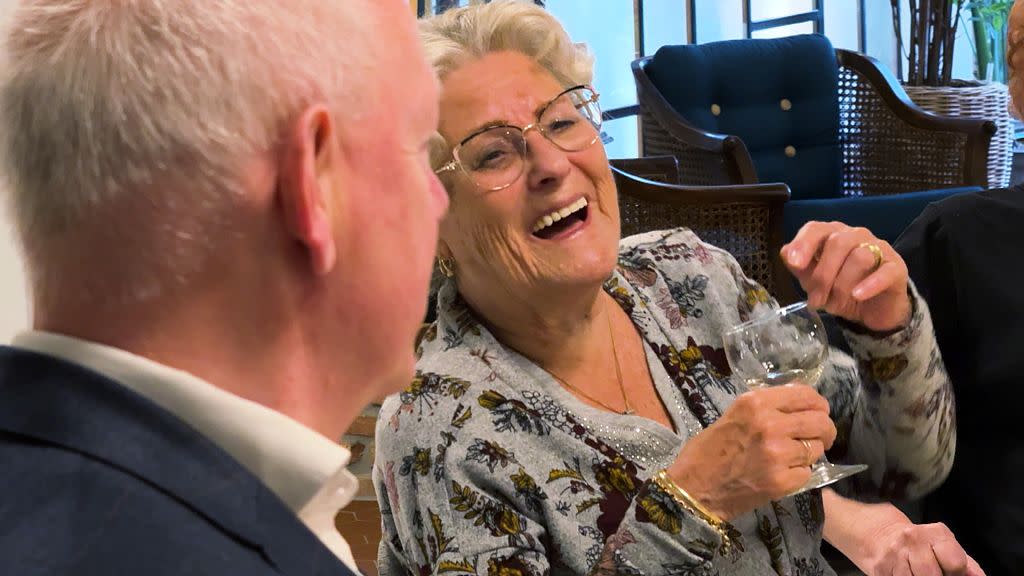Creative caring: Social solutions to elderly welfare in the Netherlands

The Netherlands is reputed to have one of the best care systems for the elderly in the world. But it's expensive. The Netherlands spends more for care than most other industrialised nations. Despite the relative high level of expenditure there is still a shortage of tens of thousands of nurses. The country is facing huge challenges because the number of elderly people is growing rapidly.
As a result of sharp rising costs and a lack of qualified staff, the care system of the Netherlands seems in need of constant maintenance. Reforms and innovations have been ongoing since 2006.
Small teams, big hearts
Buurtzorg is one of the biggest home-care providers in the Netherlands. 'Buurtzorg' means “neighbourly help”. It’s all about self-management, reducing the distances between those in need of care and flexibility. In 2007, a group of five careworkers founded Buurtzorg, today it has 1,000 teams encompassing some 15,000 members.
In the Amsterdam district of Jordaan Euronews Witness met Léoni. The Buurtzorg nurse helps elderly people that have opted to pass their sunset years at home. “We are a small team with eight nurses,” says Léoni, “and we are all equal. We manage everything ourselfes: We do our clients schedules and we decide how much time we spend with them. And it's not only the caring part but also a bit of talking - and we have the time to do that, because there is no overhead and that saves a lot of money.” In plain language: efficient mini-teams without any managers, amounting to 30% lower costs. That’s why the concept is starting to be copied in other countries.
Completing the care circle
In the newly-built Brandevoort district in Helmond municipality Hans von der Brelie discovered the second secret of the Dutch care system's success: networking. Iet and Marie-José are part of an innovative concept called “precautionary care circle”. Today, they are picking up medicines from a pharmacy for an unwell neighbour.
The town is covered by a dense cluster of such volunteer care-circle groups. Municipalities and assurance companies are backing the concept because it relieves care and social services. The concept's relaxed social dimension is much appreciated by those involved. The elderly but still lively residents help their grey-haired neighbours in need of company or basic care services.
Ton Dries is the local initiator of one such precautionary care circle in this newbuilt neighbourhood: “Today its mostly practical things for which people can help each other”, he says, "such as walking the dog, dismantling a bed, mowing the grass," he says. “But in a few years time other care questions will come up more frequenty. It is important that people get to know each other well, because you are not exposing your care issues to a stranger.”
Hans had a chat with Yvonne Witter, one of the country’s leading gerontological sociologists: “In the Netherlands we need many more different kinds of housing forms, solutions between staying at home or in a nursing home”, she says. “You can share housing; you can connect generations with each other and develop many more forms of collective housing.”
Young and old together
One of those innovative housing arrangements is the Liv-Inn in Hilversum. 150 people live in a highly varied community: mostly elderly, but also students. Among the older residents are high-income retired persons, but also others receiving social benefits. The infirm and the healthy side by side, the mobile and not-so-mobile; the key phrase is sharing diversity.
Lydia Hueting was married to a car mechanic and worked as a cashier and ice-cream-seller. Thanks to certain housing benefits she now pays two thirds less rent than before. “Why did you take the decision to move into this Liv-Inn community complex,”? Hans asks her. Lydia replies: “In my former house I had fewer social contacts than here, and I am more active now: I am organising activities, I do a lot more for the other people now.”
Former trucker Ron Mokkenstorm gets involved, too. Today he’s repairing small wooden doors for a shuffleboard game. Participating, self-organisation, solidarity; those are the basic values of the Liv Inn. In addition, this innovative housing concept helps relieve the Netherlands' severe housing market crisis. “Before, we lived in a large house, but we did not need all these rooms anymore," says Ron. "Here, I like the shared kitchen space and the coziness.”
Compared to 2020, the number of elderly in the Netherlands could almost double by 2040. The social enterprise (non-profit company) Habion manages some 12,000 flats, similar to the Liv-Inn. Manager Boerenfijn explains the concept: “The elderly told us: 'we don’t want to be in a huge concentration with elderly, we want some vital people (around us), we want some young people.' The idea for us was: when you mix people, they get old together.”
Some 10% of the flats are earmarked for young people. 30-year-old Marieke Hillinga works for or a toy brick producer. In the Liv-Inn she shares a flat with her friend, a river boat worker. “At the start of the weekend, we go downstairs in the common living area, to have a drink together and just socialise with the elderly. You are laughing with each other, its super cozy.” It's a care-in-the-community that not only alleviates costs for the state, but also builds bridges between generations.

 Yahoo News
Yahoo News 
